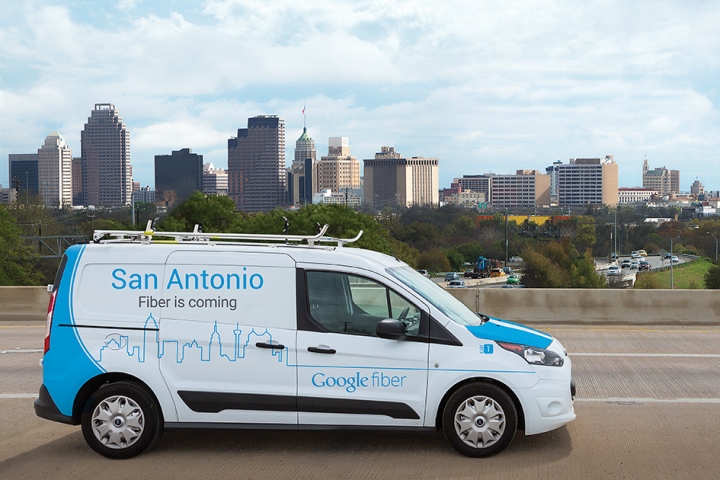
At the moment, both Time Warner and AT&T offer Internet service in the San Antonio area. According to the Time Warner page for the San Antonio area, the company offers a $65-a-month Internet-only package (12-month promotional period price) that provides speeds up to 300Mbps. Alternatively, Google Fiber will offer customers speeds up to 1,000Mbps (1 gigabit per second) for a $70-a-month price.
For an additional $60-a-month, San Antonio residents will be able to take advantage of Google’s television package as well. That includes more than 150 channels and the ability to record up to eight channels at once with a DVR function. It also includes 1TB of cloud storage on Google products such as Google Drive, Gmail, and Google Photos.

San Antonio residents that are interested in Google Fiber can submit their home address on Google’s splash page prior to the launch of the new service. This will be used as an indicator of which neighborhoods are most interested in Google Fiber and the subsequent instillation of the fiber-optic cables in their area. That page also serves as a consumer tracking mechanism for the expansion plans. For instance, pages for Atlanta, Charlotte and Nashville indicate that Google is still in the construction phase of the project.
Other cities on Google’s possible expansion map, but not yet officially announced, include Phoenix, Portland and San Jose. However, some of the broadband providers in those areas are moving quickly to match Google’s service. For instance, Cox is already rolling out a 1 gigabit service called Gigablast in the Phoenix area. The company also announced plans to double Internet download speeds for most users, basically pushing their top tier plan from 150Mbps to 300Mbps as of September 2015 for no additional price increase.


